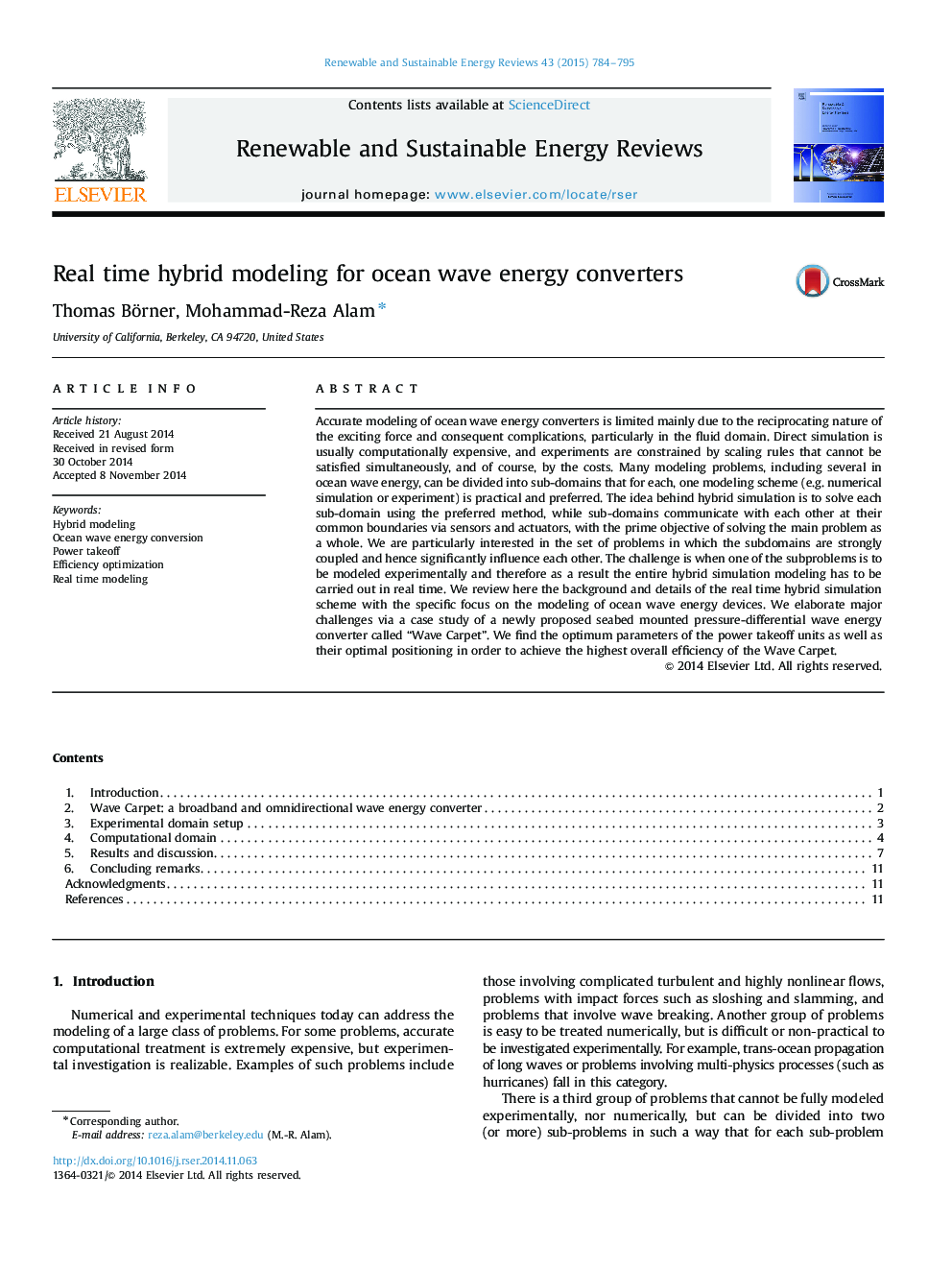| Article ID | Journal | Published Year | Pages | File Type |
|---|---|---|---|---|
| 8117944 | Renewable and Sustainable Energy Reviews | 2015 | 12 Pages |
Abstract
Accurate modeling of ocean wave energy converters is limited mainly due to the reciprocating nature of the exciting force and consequent complications, particularly in the fluid domain. Direct simulation is usually computationally expensive, and experiments are constrained by scaling rules that cannot be satisfied simultaneously, and of course, by the costs. Many modeling problems, including several in ocean wave energy, can be divided into sub-domains that for each, one modeling scheme (e.g. numerical simulation or experiment) is practical and preferred. The idea behind hybrid simulation is to solve each sub-domain using the preferred method, while sub-domains communicate with each other at their common boundaries via sensors and actuators, with the prime objective of solving the main problem as a whole. We are particularly interested in the set of problems in which the subdomains are strongly coupled and hence significantly influence each other. The challenge is when one of the subproblems is to be modeled experimentally and therefore as a result the entire hybrid simulation modeling has to be carried out in real time. We review here the background and details of the real time hybrid simulation scheme with the specific focus on the modeling of ocean wave energy devices. We elaborate major challenges via a case study of a newly proposed seabed mounted pressure-differential wave energy converter called “Wave Carpet”. We find the optimum parameters of the power takeoff units as well as their optimal positioning in order to achieve the highest overall efficiency of the Wave Carpet.
Related Topics
Physical Sciences and Engineering
Energy
Renewable Energy, Sustainability and the Environment
Authors
Thomas Börner, Mohammad-Reza Alam,
